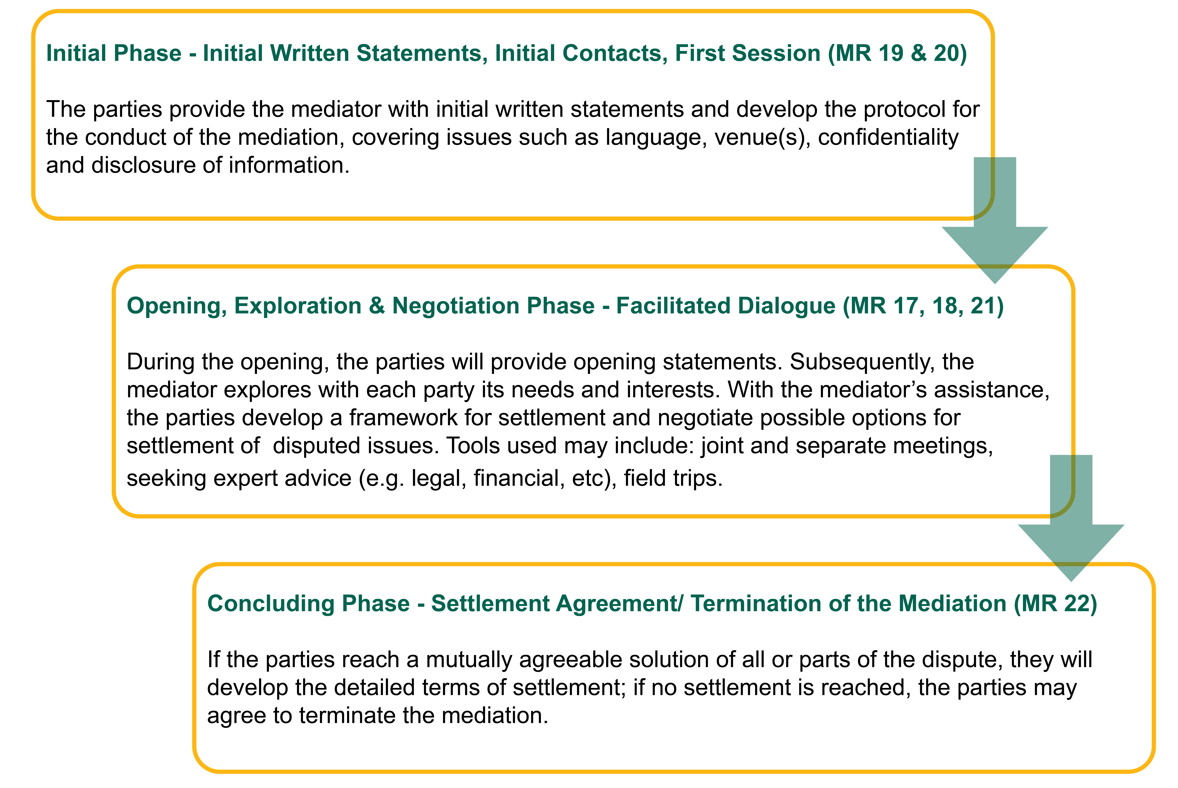This series of blogs posts explores investment mediation from a variety of angles. In this second installment, we focus on what mediation is—and how it works—in the context of investment disputes. In part one, we explore how to determine whether mediation is an appropriate option for resolving an investment dispute, while part three outlines the primary differences between mediation and conciliation at ICSID.
Mediation is considered both the oldest and newest form of dispute settlement. It has long been an effective means to resolve cross-border commercial disputes, and is increasingly recognized as a tool for settling international investment disputes.
To date, arbitration has been the primary process to resolve differences that arise between foreign investors and States. The vast majority of these arbitrations have been conducted under the auspices of the International Centre for Settlement of Investment Disputes (ICSID), pursuant to either the ICSID Convention or the ICSID Additional Facility Rules, or the UNCITRAL Arbitration Rules. In recent years ICSID Members States have also recognized mediation as an effective tool for investment dispute settlement. This is seen, for example, in references to mediation in their bilateral and multilateral investment agreements, the development of practical guidelines on mediation by international organizations (including ICSID’s recent Background Paper on Investment Mediation), and State support for the Singapore Convention on Mediation.
What is investment mediation, really?
Mediation is a flexible process in which an independent and impartial person actively assists the parties to reach a negotiated agreement to resolve their dispute, with the parties in ultimate control of the decision to settle and the terms of resolution. Investment mediation can be understood as mediation that relates to an investment and involves a State, a State entity or a Regional Economic Integration Organization (REIO). Mediation requires the consent of the parties, which can be contained in a contract (e.g. a concession or license), agreed ad hoc between the disputing parties, or based on a provision in an international investment agreement or domestic law.
As a form of facilitated negotiation, mediation is available when deemed helpful by the parties at any stage in the investment life cycle. It may also be used in tandem with arbitration, or even after an award is rendered and the parties negotiate its implementation. It is important to emphasize that the mediator facilitates the parties’ negotiations and assists them to find a mutually agreeable solution—mediators do not resolve or decide the dispute for the parties.
ICSID Mediation Rules
ICSID began the development of the first set of institutional mediation rules specifically designed to resolve investment disputes in 2018. Mediation at ICSID is available for use by all States and broadly accessible, as there are no nationality limitations or ICSID membership requirements to be fulfilled.
The ICSID Mediation Rules authorize the ICSID Secretariat to administer mediations: (i) that involve a State party (or a Regional Economic Integration Organization), (ii) that relate to an investment, and (iii) which are based on the parties’ written consent to mediate under the ICSID Mediation Rules. In contrast to arbitration or conciliation under the ICSID Convention, none of the parties to a mediation need to have a link to an ICSID Contracting State, nor must the mediation involve both a national of a State, on one hand, and a State party, on the other. Indeed, the parties to a mediation may be from the same member State (provided at least one State, or its agency or constituent subdivision, is a party to the mediation).
The ICSID mediation process commences with the filing of a request for mediation. The Request may, either be based on an existing agreement to mediate between the disputing parties, or contain an offer to mediate which the Secretariat transmits to the other side, inviting that party to indicate whether it accepts the offer to mediate. (If the offer is rejected, no further action will be taken on the request for mediation.) If an agreement to mediate exists (or is formed through this process), the request is registered. The next step is the appointment of either one or two mediators, each appointed by agreement of the parties.
Thereafter the mediation process moves through three phases:
- An initial phase, during which the parties provide the mediator with a first set of written statements, and the mediator works with the parties to develop the procedural framework for the conduct of the mediation (called the “mediation protocol”:) (Rules 19 & 20).
- The negotiation phase, during which the parties will present their opening statements and the mediator works with the parties to explore the parties’ interests, needs, and constraints and to identify a general framework for settlement. The mediator will then assist the parties to develop options, and exchange offers and counteroffers (Rules 17, 18, 20, 21).
- A concluding phase, during which the parties will develop and memorialize detailed terms of settlement and obtain the approval of relevant entities as needed. If no agreement is reached, the mediation will terminate (Rule 22).
The chart below visualizes these stages in an ICSID mediation:
While the mediation rules have not yet been formally adopted by the Administrative Council, parties have in practice agreed to apply the proposed Mediation Rules and requested ICSID’s administrative services. For more information, please contact the ICSID Secretariat at ICSIDSecretariat@worldbank.org.
________________________
To make sure you do not miss out on regular updates from the Kluwer Mediation Blog, please subscribe here.



